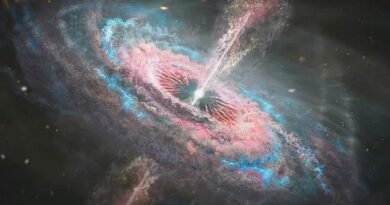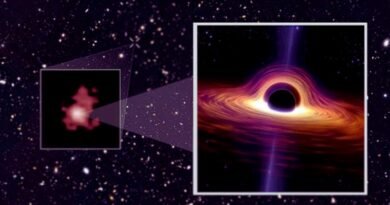Antimatter Breakthrough: Unveiling New Science that Could Illuminate the Existence of Everything

Matter manifests in various forms, each possessing distinctive and captivating properties. In September, a team of researchers at CERN achieved a significant milestone after meticulously engineering an experiment, successfully generating and capturing a sample of antihydrogen, the antimatter counterpart of hydrogen.
This achievement involved maintaining the sample within a delicately balanced magnetic field containment. The slightest misalignment could lead to immediate annihilation against the container walls. Subsequently, the researchers conducted a fascinating experiment: they dropped the antihydrogen sample.
The ALPHA-g experiment aimed to unravel the extent of antimatter’s ‘anti’ properties. Since the 1920s, when antimatter was initially proposed as a creative solution to balance equations, we have advanced in producing antimatter through experiments and detecting its presence in high-energy astrophysical environments.
Despite its reputation for volatility, antimatter, particularly the positron (anti-electron), has proven less exotic than popular belief. A positron mirrors an electron but with an opposite charge (+1 instead of -1) and ‘parity.’ However, until the ALPHA-g experiment, the mass behavior of antimatter remained unconfirmed.
Could antimatter exhibit anti-gravity properties? Would antihydrogen fall upwards when dropped? Regrettably, the results of the ALPHA-g experiment indicated that, in terms of gravity, antimatter behaves similarly to regular matter—it falls down. In essence, antimatter aligns with the conventional laws of gravity.
The definition of matter in physics centers around rest mass, inherent to particles at rest. Atoms, molecules, and subatomic particles like quarks and neutrinos fall under the category of matter. Surprisingly, massless elementary particles such as photons and gluons are excluded.
Moreover, non-matter entities, like energy in Einstein’s general relativity, contribute to mass. Exotic matter, encompassing hypothetical or unconventional substances, includes dark matter and speculative concepts like negative-mass matter.
The delicate balance between matter and antimatter is crucial. The prevailing theories suggest an equal creation of both during the Big Bang, a scenario leading to complete annihilation. Yet, a slight imbalance favoring regular matter allowed the universe to evolve into stars, galaxies, planets, and life.
Experiments like ALPHA-g not only contribute to our understanding of matter but also offer insights into the profound question of existence. Unraveling the mysteries of antimatter may hold the key to understanding the very essence of our existence—a pursuit truly worth the investment of time and resources.








